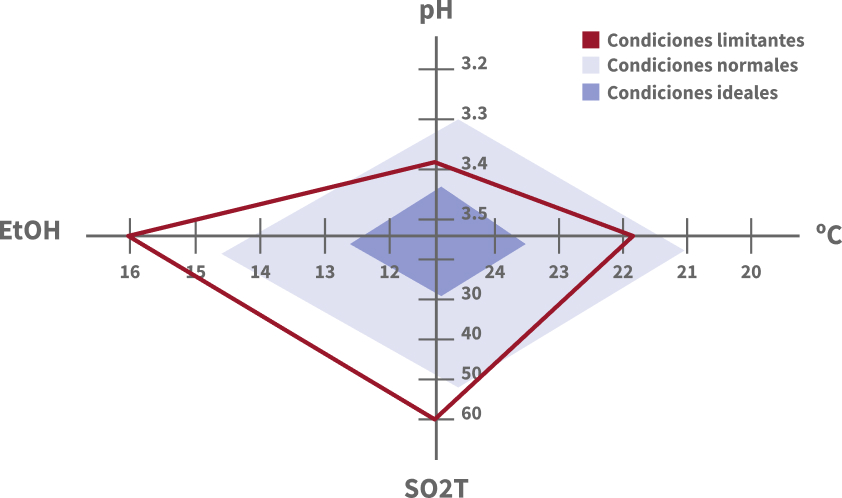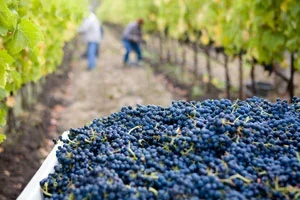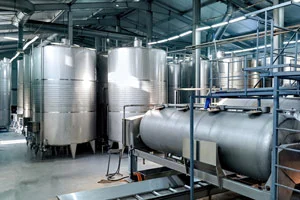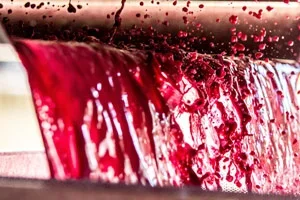Biocontrol
The grape prune contains a significant microbiological load of different species of yeasts, Saccharomyces and non-Saccharomyces bacteria and fungi, which can be of oenological interest or could also be the cause of deviations. In an unprotected situation, these indigenous micro-organisms establish themselves as the predominant species in the fermentation process. The lack of knowledge about the predominance of the species and their oenological characteristics makes it necessary to control them in order to prevent their development and thus improve the implantation of the yeasts we have chosen, which are more appropriate to the character of the wine.
When it comes to the microbiological control of native populations from the vineyard, there are different strategies for effective action, with control derived from biological processes (Biocontrol) being the most in-demand strategy in recent times:
Biocontrol
Application of SO2
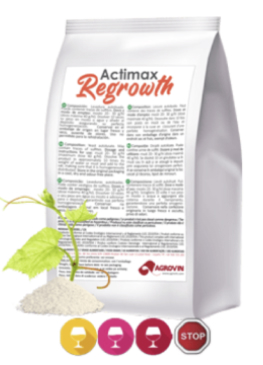
Competition at the microbiological level is a means of protection against the development of indigenous microorganisms that cause deviations. Non-Saccharomyces yeasts adapt more easily to the must environment, managing to establish themselves and become predominant in the early stages of alcoholic fermentation. The selected lactic acid bacteria provide microbiological security once alcoholic fermentation is complete, displacing resistant yeasts such as Brettanomyces.
Biocontrol actions
Addition of chitosan
The application of chitosan in must reduces the load of contaminating micro-organisms. Its special affinity for non-Saccharomyces yeasts and lactic acid bacteria facilitates the development of alcoholic fermentation by the LSA of the Viniferm range. Similarly, in harvests with high microbiological contamination, these populations can be reduced by reducing the consumption of nitrogenous resources and vitamins.
The in-line addition of liquid formats facilitates the work during harvest reception. In the case of formulations containing chitosan, such as Microstab pH, they make it possible to reduce the population of indigenous flora during the earliest stages, at the time when those populations are not very high and microbiological control is easier. Some of its applications include:
- Its in-line application prior to racking of white and rosé musts will help to reduce the risk of fermentation beginning prior to adjusting the turbidity.
- White and rosé musts with high pH have a higher risk of developing malolactic fermentation prior to the start of alcoholic fermentation. In these situations, the application of Microstab pH is an effective prevention tool.
- In winemaking using grapes with compromised sanitary quality, it can be used to control contaminating micro-organisms such as Brettanomyces.
Traditionally, sulfur has been used to maintain wines during their preservation, both from the microbiological point of view and against oxidation processes. However, there is currently a generalized tendency to reduce or eliminate the content of this preservative in wines.
On the other hand, sulfur additions at the end of fermentation are made when there are still viable yeasts in the wine. These yeasts continue with their metabolism, although the sugars have been exhausted, conserving the activity of the active sulfite-reductase enzyme, so they are able to reduce sulfites to hydrogen sulfide, increasing the reduction aromas.
Another consequence of yeast activity is their ability to produce acetaldehyde in the presence of free sulfur, combining it rapidly.
An effective tool to avoid early sulfite problems is the use of Microstab Protect at the end of alcoholic fermentation (when MLF is not desired) or at the end of malolactic fermentation. Microstab Protect is able to control the development of undesirable microorganisms and prevent them from reaching critical population levels that cause spoilage. Microstab Protect is very effective against lactic acid bacteria and Brettanomyces, the main causes of microbiological defects in wines.
Microstab Protect was created as a complete alternative to the use of sulfur, combining antimicrobial, antioxidant and antioxidant properties.
- Substantially reduces or eliminates Brettanomyces populations. Effectively reduces lactic acid bacteria populations.
- Antioxidant and protective effect against oxidation. Natural antioxidant protects the aromatic fraction and limits wine browning.
- Inactivates oxidation catalysts. Reduces the activity of oxidative enzymes.
- Reduces the content of metals (Fe and Cu), catalysts of chemical oxidation of wines.

Seeding of bioprotective yeasts
The autochthonous flora attached to grapes contain different types and species of micro-organisms which evolve differently during vinification. The adaptation of non-Saccharomyces yeasts to the environment in the absence of ethanol is predominant, which is why the use of this type of yeast in an incipient form will allow them to occupy the biological niche quickly and efficiently, preventing others of low oenological quality from establishing themselves and causing problems.
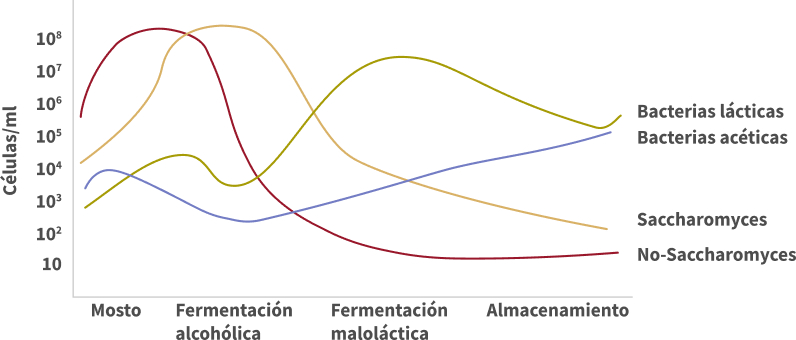
One of these non-Saccharomyces yeast species is Torulaspora Delbrueckii, naturally present at the beginning of fermentation due to its perfect adaptation to the environment in the absence of alcohol, and its synergy with the Saccharomyces species allows them to be combined for a proper end of alcoholic fermentation even with high alcohol content. In the case of Viniferm NsTD, we not only carry out an early adaptation of a yeast that makes it possible to displace other contaminating microorganisms, but its oenological properties will give rise to wines with high aromatic expressiveness due to its high β-lyase activity and taste improvement due to a high polysaccharide transfer to the medium.
Conducting MLF with selected bacteria
The end of alcoholic fermentation represents a temporarily unprotected window. The decrease in the population of fermenting yeasts, once the sugar has been consumed, gives rise to an opportunity for those micro-organisms that can withstand the conditions limiting development with a considerable alcohol content. Yeasts such as Brettanomyces can take advantage of this moment, causing well-known problems, such as an increase in volatile acidity, the appearance of volatile phenols, a decrease in colour, etc. To avoid this, it is important to start malolactic fermentation early.
The addition of selected lactic acid bacteria will have advantages in the development of the bacteria, as their better adaptation to the medium will facilitate the start of the transformation of malic acid into lactic acid. In addition, the liquid format and the production of the Viniferm OE range of lactic acid bacteria guarantees implantation, as they are produced and transported in a medium with conditions similar to those present in wine.
On the other hand, the selection of lactic acid bacteria from the Viniferm OE range is focused on enhancing the quality of the wines by respecting the varietal, controlling volatile acidity, not producing biogenic amines and protecting the chromatic characteristics of the wines.
